Features of gooseberry pruning

All shrubs and trees are pruned. They do this to rejuvenate the plant, give it a neat look, optimize yield and protect against pests. This extends the lifespan of shrubs and trees, and allows new branches to form in places where they would not have grown by themselves. In the article, we will consider the features of gooseberry pruning.

The need for a procedure
Gooseberries are no exception to the basic rules for updating any bush. Pruning is performed during a period when the sap flow has already been stopped, or has not yet begun, but not in frosty conditions. It is necessary to do this for several reasons.
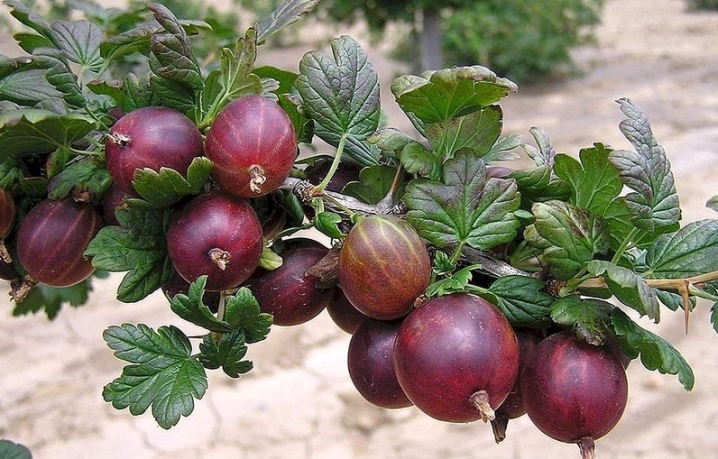
- The plants have grown so that the entire crop is concentrated not in the middle of the bush, but at the ends of the youngest branches. Flowers and berries do not appear where there is little light and not enough air. The middle part of the bush, where the berries should be tied, is not just shaded, but in dense shade. You have noticed more than once that, for example, in fruit trees such as apricot, the main crop is located just at a height of 4.5-6 m, when it has grown to these very 6 meters. It becomes difficult to get most of the fruit. It is for this reason that too high crowns of neglected trees are pruned, say, to a height of 3-4 m, so that it becomes possible to get them from a stepladder, and not shaking the tree and not showing the wonders of acrobatics.
All bush berry crops behave the same way, and gooseberries are no exception.
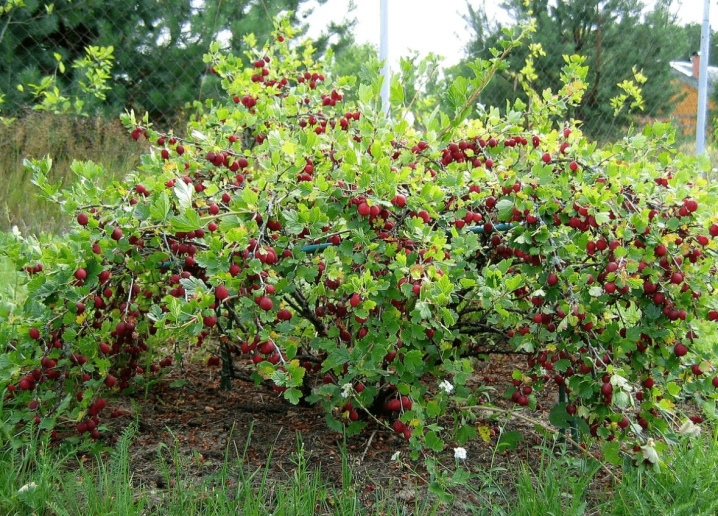
- Bushes, whose branches have grown densely and in significant quantities, are more easily affected by pests. Those, in turn, like to hide in quiet, sheltered from the wind, including near-stem areas and thickened branches.
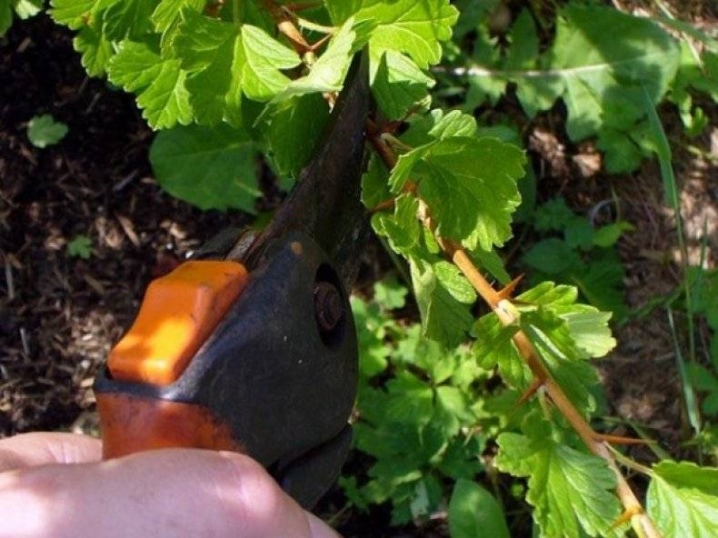
- Productivity also decreases for the reason that there are few flowers in the middle, where there is a thick shadow. This means that there are few bees, because they are attracted mainly by the nectar formed in the inflorescences. If there are no flowers, then the bees have nothing to do there. And if there are no inflorescences, there is no harvest.
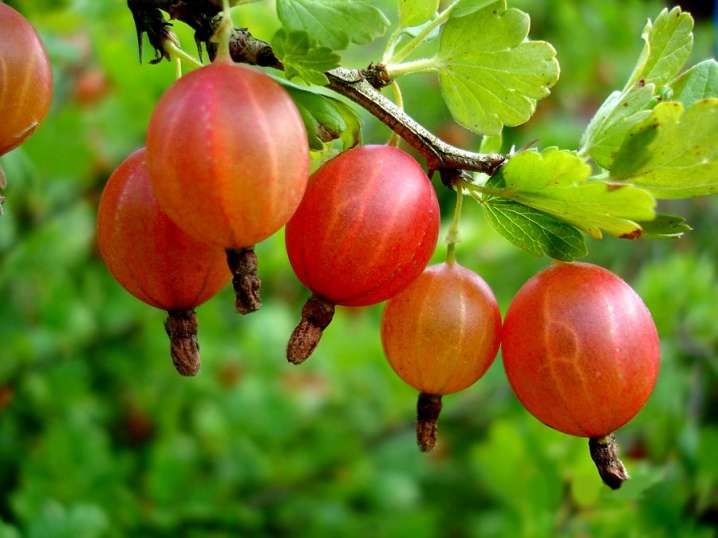
- To prevent pests from starting up, the plant must be well ventilated. In places where the wind is completely absent, pests, mold, fungus multiply, which infect the plant on the main branches, which causes the bush to completely die.
If the disease has also affected the root, then new shoots will not grow back.

The difference between bushes and fruit trees is that the main root lives for decades, while growing in all directions. And in places where it comes close to the surface of the soil, young branches sprout. This feature is used when dividing the parent bush according to its processes into parts: cut off shoots with adventitious roots, branched off from the main root, together with lateral roots, are dug up and transplanted to another place. The transplant is performed with a lump of earth placed in a previously dug hole. This is best done in October, when the leaves fall and the plant is ready for winter. If you do not allow new shoots to form, then the old bush quickly grows old and eventually dies.

Views
To trim gooseberry bushes, like any other crop of bush berry type, rejuvenating, sanitary and formative pruning is used on it. Each of them differs in seasonality and frequency.
Sanitary
Sanitary standards assume that the bush is kept in proper condition - it should not have mold, fungus, the development of microbial colonies is not allowed, the bush should not be damaged by pests (insects, spiders, rodents). If any of the branches accidentally dried up or suffered from pests, it must be removed immediately, regardless of the season and weather. The point cut to a living place is processed with garden varnish, wax or paraffin - this way moisture and pests will not get into the cut in the future, the branch will not continue to die off, which means that the bush will be fully preserved.
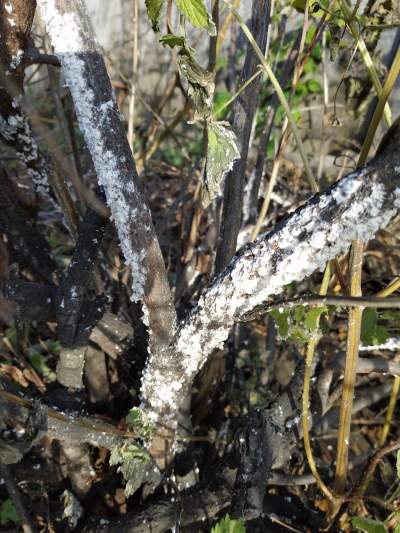
Formative
Formative pruning is done in late October or early November, depending on the season. Wait for the foliage to fall: at these moments the bush is preparing for winter. You can start pruning and with active leaf fall - all the leaves will turn yellow and become lifeless, which means that the plant "falls asleep" until spring. Formative pruning involves a delay in the development of bushes at the same height. For example, the owners want the gooseberry branches not to rise above 1.5 m, otherwise it will be difficult to harvest from a great height, especially in dense thickets, where a person cannot squeeze without trampling some of the plants. Formative pruning helps to delimit bushes in orderly rows, making it easier to approach each of them. It is not recommended to perform it in the summer: the bush is in the stage of active growth. Pruned branches with active sap flow, even with timely treatment of the ends of the pruning with a waterproof coating (for example, wax), can lead to the loss of some moisture and nutrients from the plant, which will weaken it.
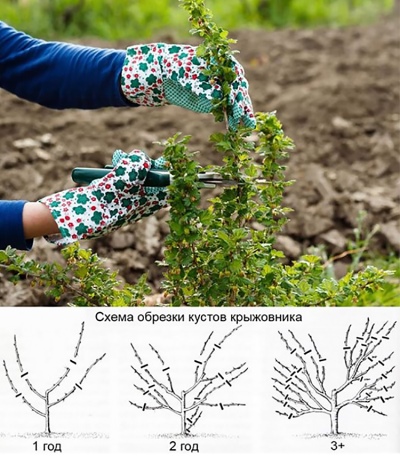
Rejuvenating
This type of pruning is similar to formative pruning due to seasonality. There is not much difference between them - except that the old branches are cut off or cut down almost to the base, only a few buds from the ground level will remain on them.
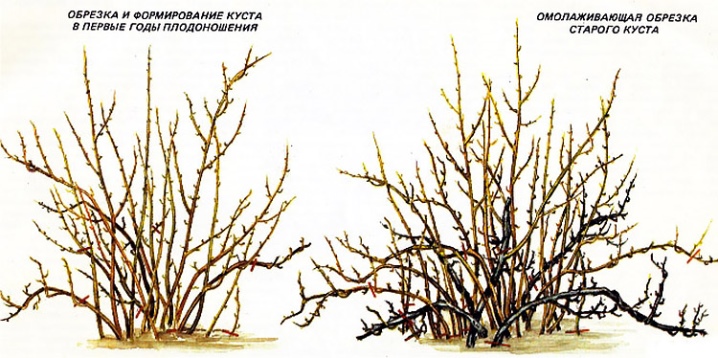
How to prune a bush correctly?
When planting and in different years of the life of the bushes, pruning of gooseberries is carried out according to slightly different step-by-step instructions.
When landing
The planting of a previously cut off lateral separate process, together with its adventitious roots and part of the root of the parent bush, which is the main one for the same process, occurs by digging in a clod of earth, from where this growth was born. Turning the shovel in the ground, with its help, cut off a process with a piece of root. Then the separated clod of earth is placed in a previously dug hole, which is carefully trampled around. Immediately water the newly transplanted shoots with a weak solution of "Kornevin". After completing the main work on transplanting the part separated from the parent bush, using a pruning shears, cut the branch of the overgrowth to the 4th or 5th (counting from the ground level) buds. Cover the cut with garden varnish.
If the cut off part of the branch is healthy, you can try to germinate it in a pot with a mixture of peat and black soil, not forgetting to take care of it, like a full-fledged flower, at home, in greenhouse conditions. The transplanted bush will take root by winter, and the cut off top will also give roots if everything is done correctly. As a result, in the spring, a bush planted in open ground will begin to grow profusely, and at the same time you will transplant the rooted top of the branch (a cutting with an uncut end), having received two full-fledged bushes. In the fall, you can cut off the "pot" bush - both grow fully in the open field.
For the next years, pruning is carried out according to the scheme inherent in young bushes with age from one year.
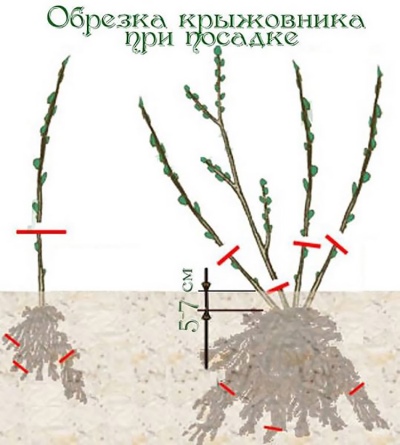
Young
Young bushes that have passed the stage of survival (survival) when planting are cut according to a certain scheme. In the second year, branches from shoots that were previously transplanted and have already taken root are actively growing. During spring, summer and part of autumn these branches gain "power" - they grow and become woody. Pruning is performed at the 3rd, 4th or 5th bud, as in the previous case. So from year to year, a spreading crown of the bush is formed.Lignified shoots can be freely pruned, not forgetting to process with pitch, wax or paraffin, without fear that after pruning they will die. A bush that has too long branches, bending under the weight of daughter shoots, or there are too many of these shoots, bear fruit worse. Pruning young gooseberry bushes in this case resembles pruning ornamental bushes, such as a climbing rose. Young bushes are formed in March and November. Do not be afraid to cut off all unnecessary, as well as diseased and dried-up - gooseberries, like blackberries, raspberries or currants, are extremely tenacious, and at the first opportunity they will start new shoots.
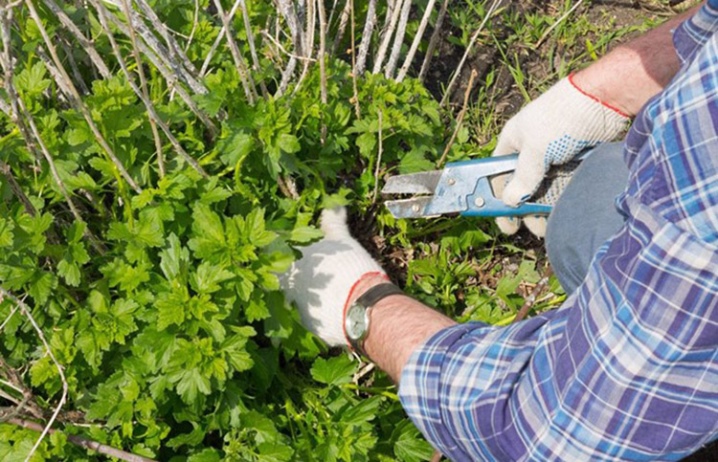
If in the first year when planting, the trimming of the planting material is sharply limited, then in the second year, adhere to the following scheme:
-
Cut 6-7 of the largest shoots so that the length of the remaining living segments does not exceed 30 cm;
-
shorten all other lignified shoots to 20 cm.
In the third year, you need to thin out the gooseberries according to the following instructions.
-
Cut off any underdeveloped, dying, or withered branches. The bush should contain 16-18 young branches of different ages (1-2 years).
-
Cut off 15 cm of vegetation from the top (not from the base).
This will spur the growth of the offshoots. At the same time, thickening of the bush, which interferes with further care and harvesting, will be excluded.
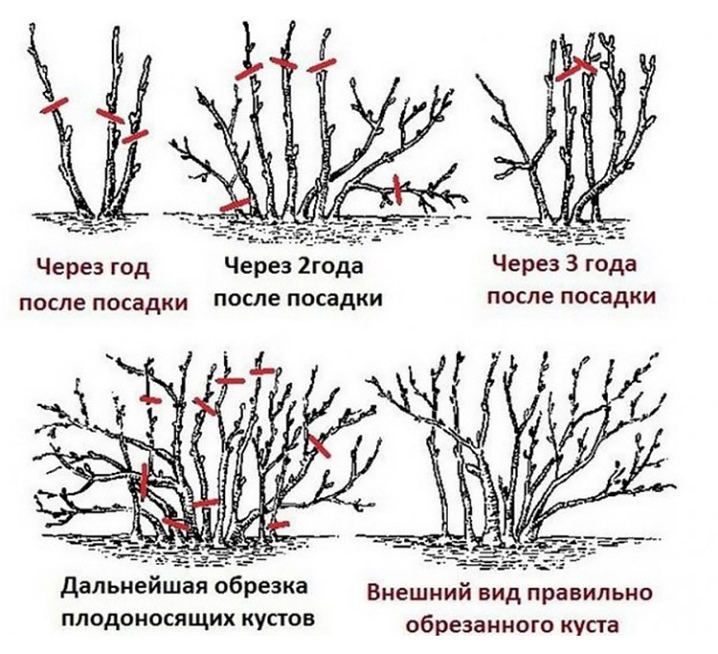
old
If the gooseberry bush is old, and the years of caring for it are not counted from the moment the new bush was planted, but from the moment the pruning began once (and by someone before you) planted, in the fourth year of leaving, all branches that are more than 6 years old are cut off. The fact is that fruiting after 6 years sharply declines. It is better not to keep unproductive branches in excess - they take away nutrients from the new, young ones that have replaced the old ones.

The general principle is to strengthen the formation of exclusively fruiting branches, cutting off everything old and useless in a timely manner. Work on the bush berry is systematic, and pruning should be performed at least twice a year: in the spring and autumn, rejuvenate the bushes.
Gooseberry bushes that have been started for several years in the care are pruned according to a simple scheme.
-
Choose the healthiest, well-preserved branches, shorten each branch to the 5th bud from the root socket. Everything else, which has grown in disorder, is cut off.
-
If a bush that has been neglected for many years has multiplied by layering - the weighted branches bent down to the ground, put down roots at the point of contact with the ground, cut them off from the mother parts (old bush). After such a pruning, you will have virtually ready-made new bushes that do not need to be replanted. It is recommended to align them with vertical bar supports, pointing straight up.
-
All other vegetation, including weeds, weed out, uproot, providing free access to new bushes. Create conditions for enhanced growth of the latter.
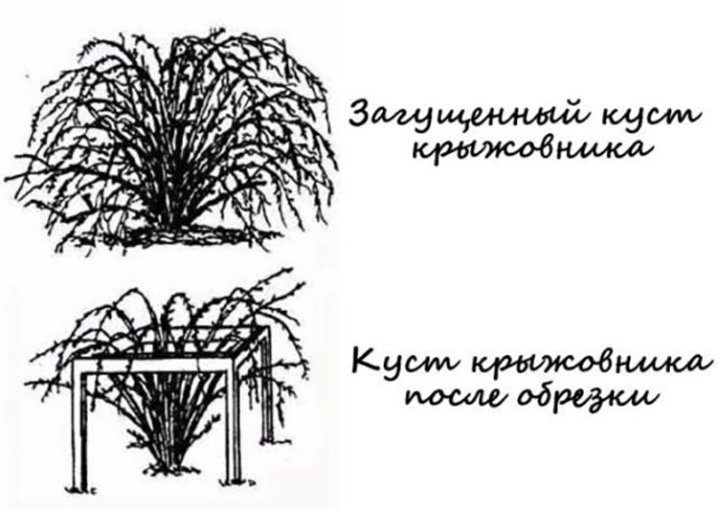
Conduct a complete audit of old gooseberry bushes. The abundance of branches is harmful: the yield here will remain extremely low. For this purpose, it is necessary to thin out the bushes - in addition to great practical benefits, they will acquire a well-groomed and beautiful appearance.
The rhizomes of old bushes with more than 30 years of age are completely uprooted from the ground. However, before destroying the old, during the season, provide for the care of new shoots, plant some to another place on the site, free from fruit trees and any bushes, a flower garden. Perhaps some of the young branches, if you want to revive the gooseberry plantings in the same or even greater volume, prepare and germinate for a new planting. After that, get rid of what is left of the old bushes: their yield and vitality are extremely low, and these roots cannot be saved, their life cycle simply ends.
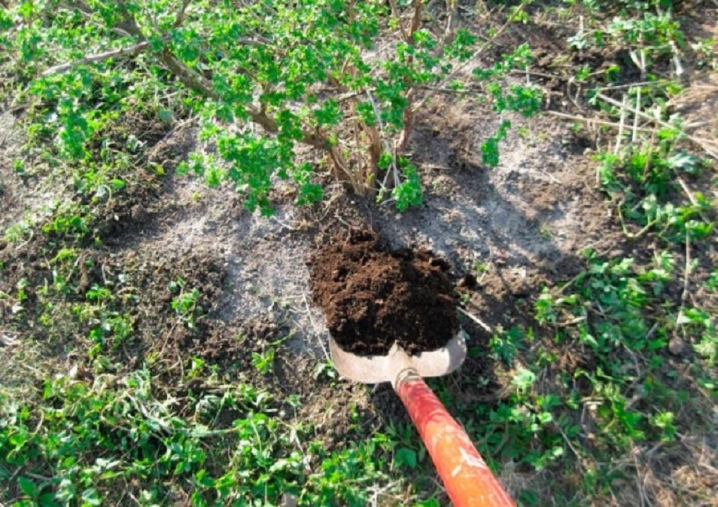
The nuances of pruning taking into account the term
Follow these guidelines for caring for gooseberry bushes.
- Do not prune branches when the buds have already burst and new shoots have begun to grow. This is fraught with weakening, deterioration in the health of the bush.The fact is that this type of vegetation awakens very quickly: yesterday the branches were bare, and today the buds burst, rudimentary branches hatched.
This applies to bushes of any age.
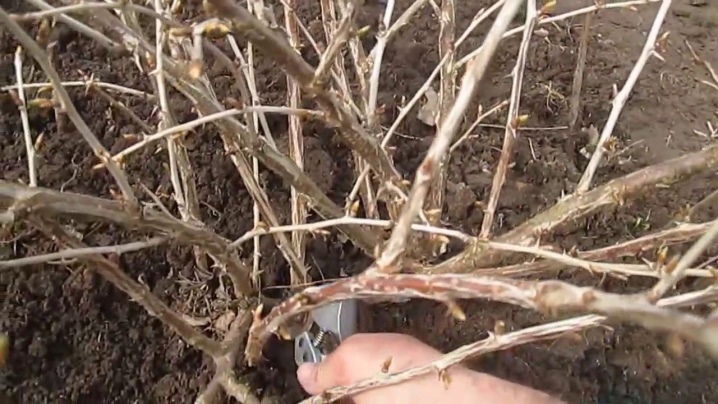
- Do not prune in early fall. Young branches, immediately hatching from the cut off part of the old ones, do not have time to become lignified by winter, and also die. And this, again, will weaken the already grown bush.
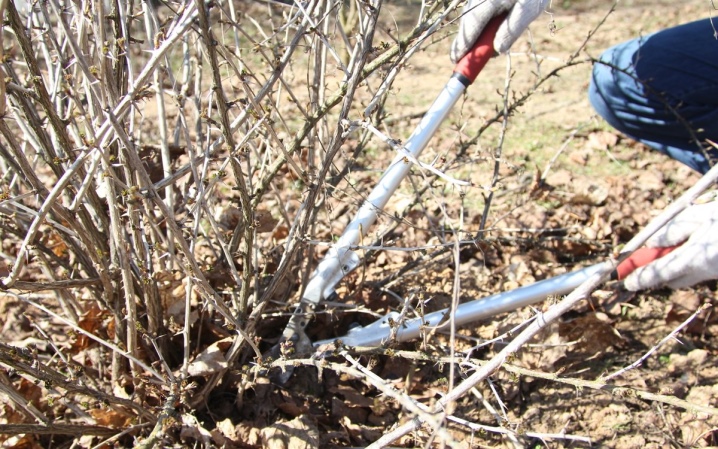
- Do not make any pruning other than sanitary pruning in the summer. An exception is also the cutting of green twigs, which create a thickening of the bush, which interferes with harvesting. This pruning is done at harvest or after harvest. The thickening shoots are germinated, for example, in a glass of a weak solution of a root stimulant. After rooting, they are planted in separate pots, a box or, for example, plastic jars from sour cream: the resulting planting material is suitable for further vegetative propagation.

Remember the main rule: in spring, summer and autumn, when the growing season has already begun and has not yet ended, it is better not to touch the bushes. If they are already healthy, do not rush to prune immediately, in one step (for example, only in spring).

Gooseberries require regular attention and care. Like any culture, it cannot be left to its own devices. If you grow a garden for shade, an abundance of greenery and coolness in the summer, then use ornamental trees and shrubs, and not fruit and berry crops - you can not cut them at all, turning the summer cottage into a kind of forest park.
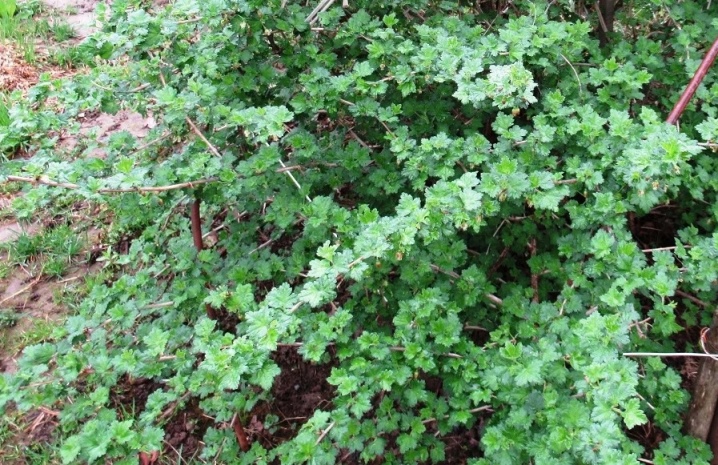













The comment was sent successfully.